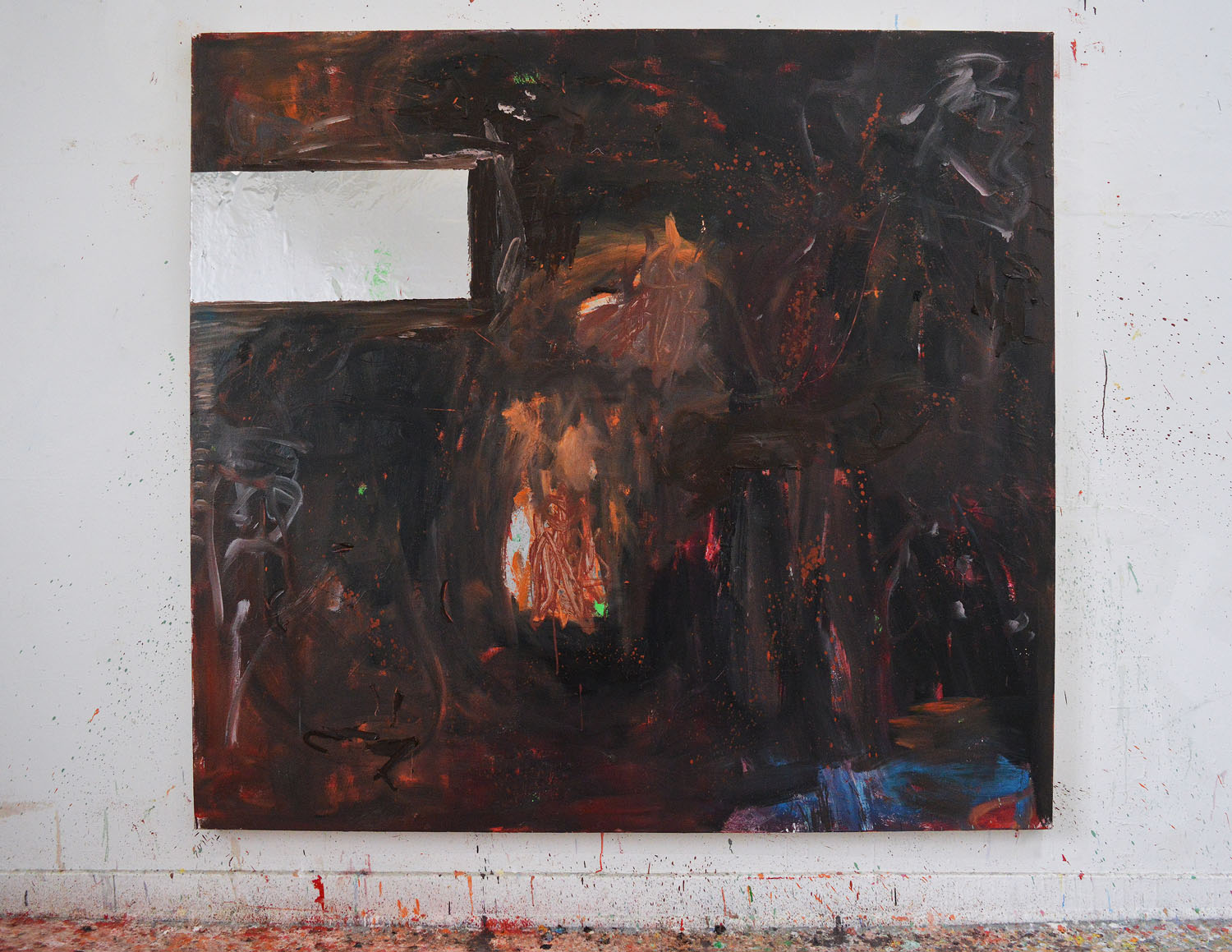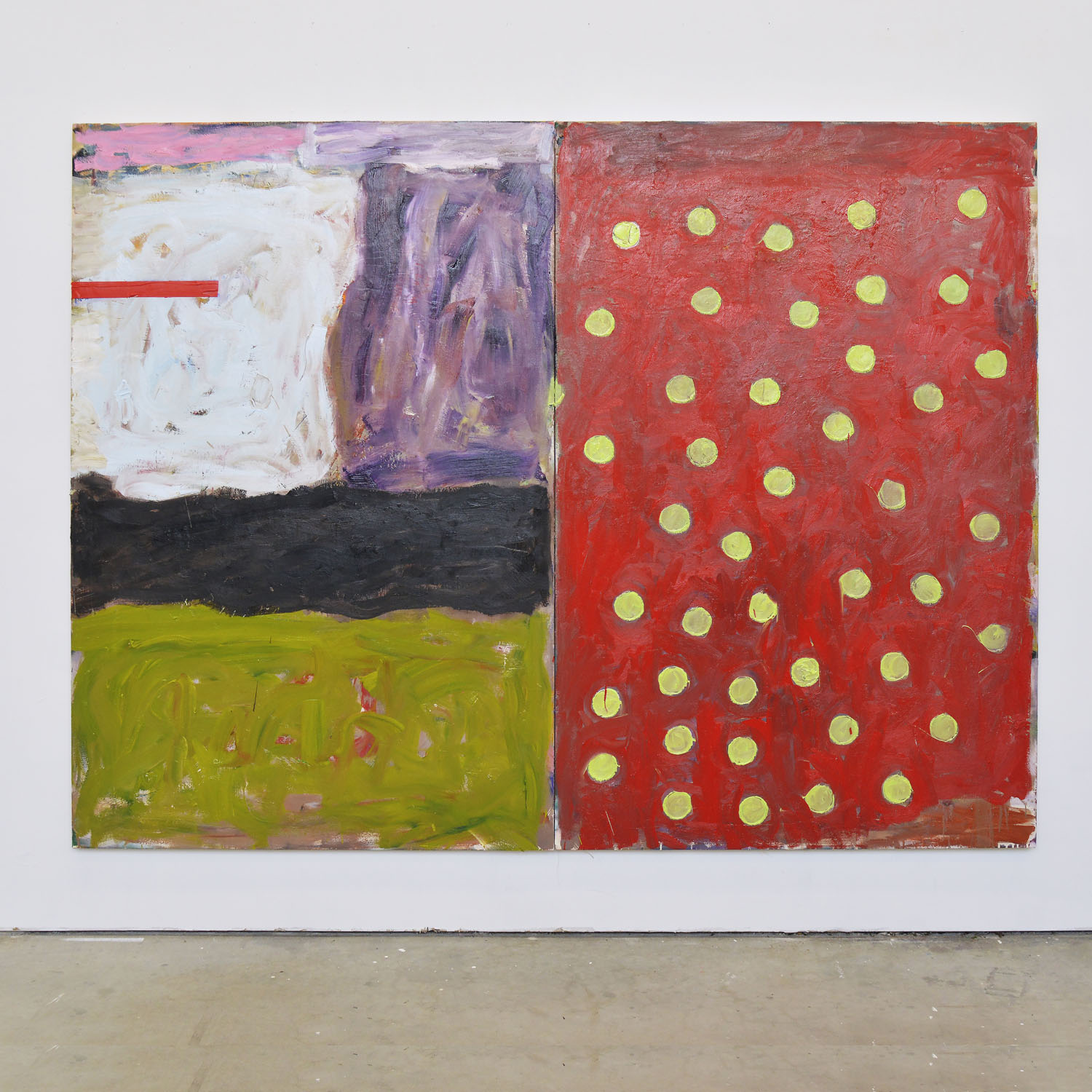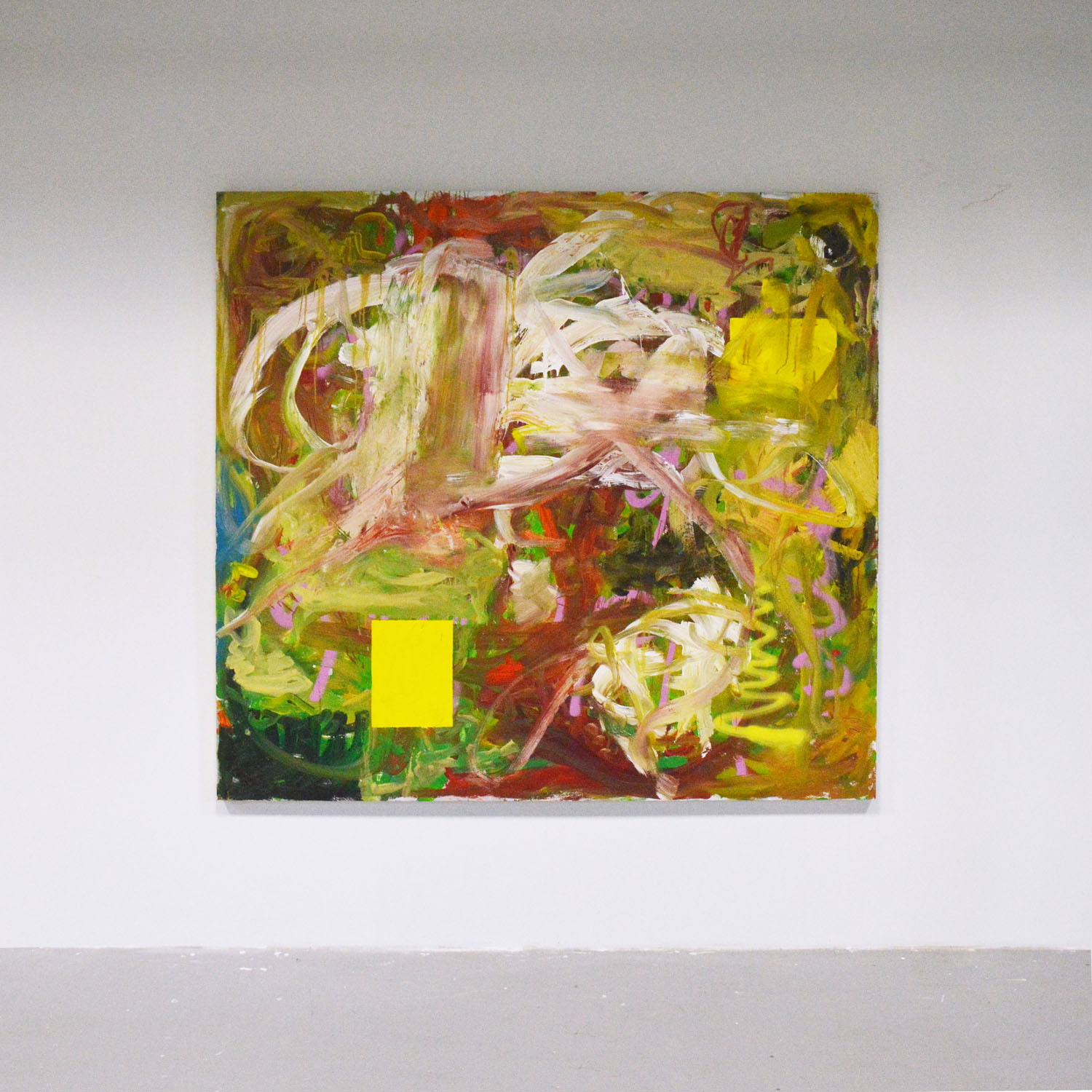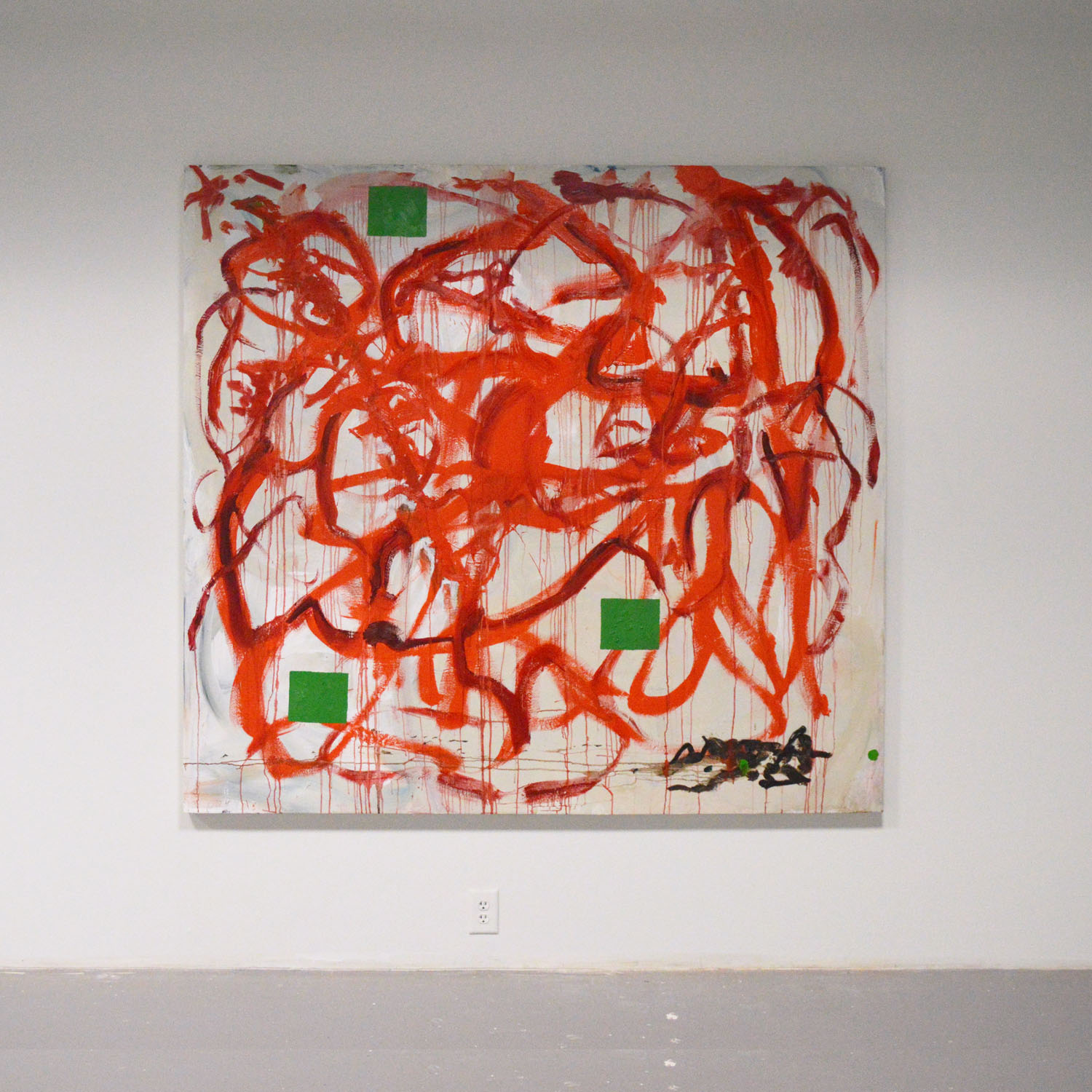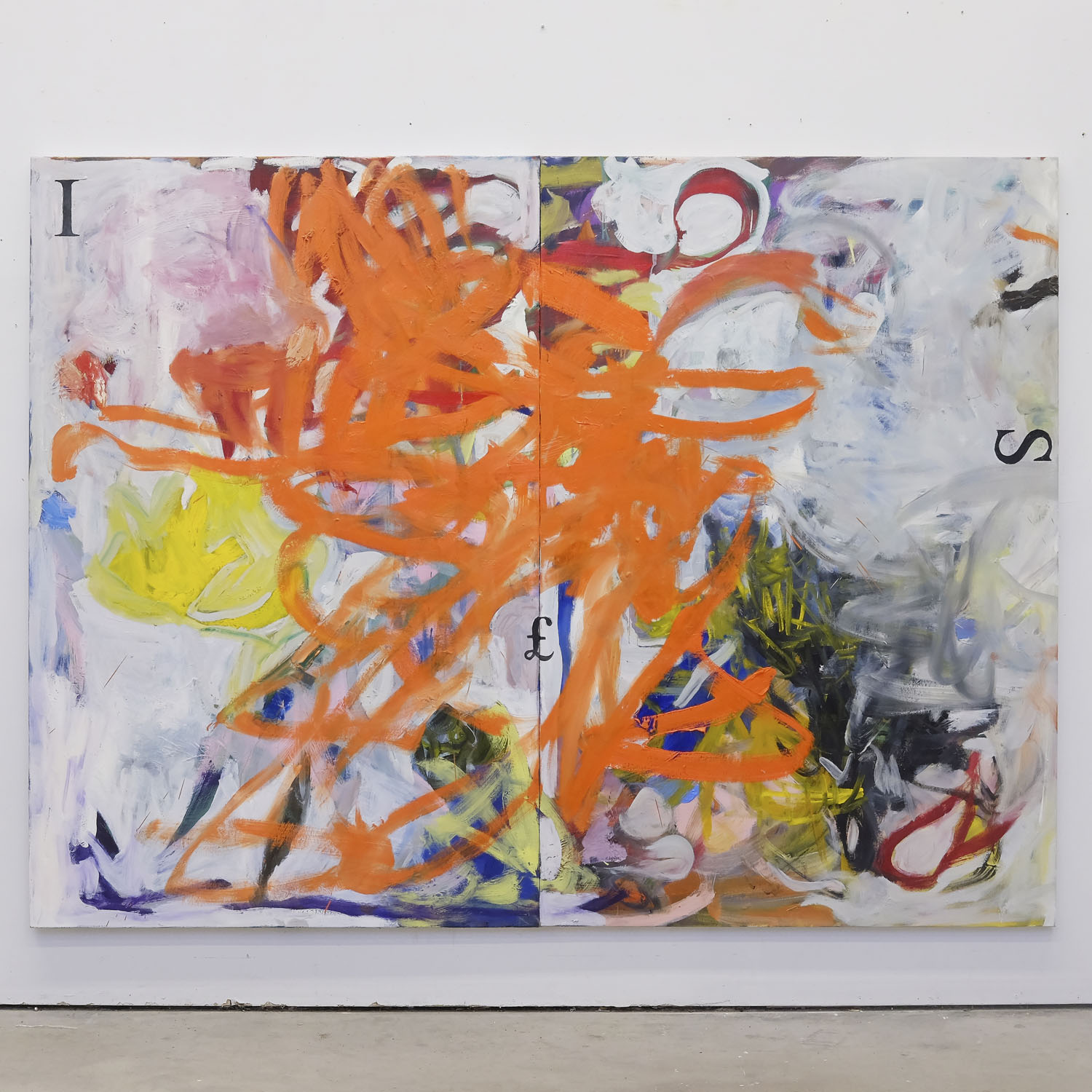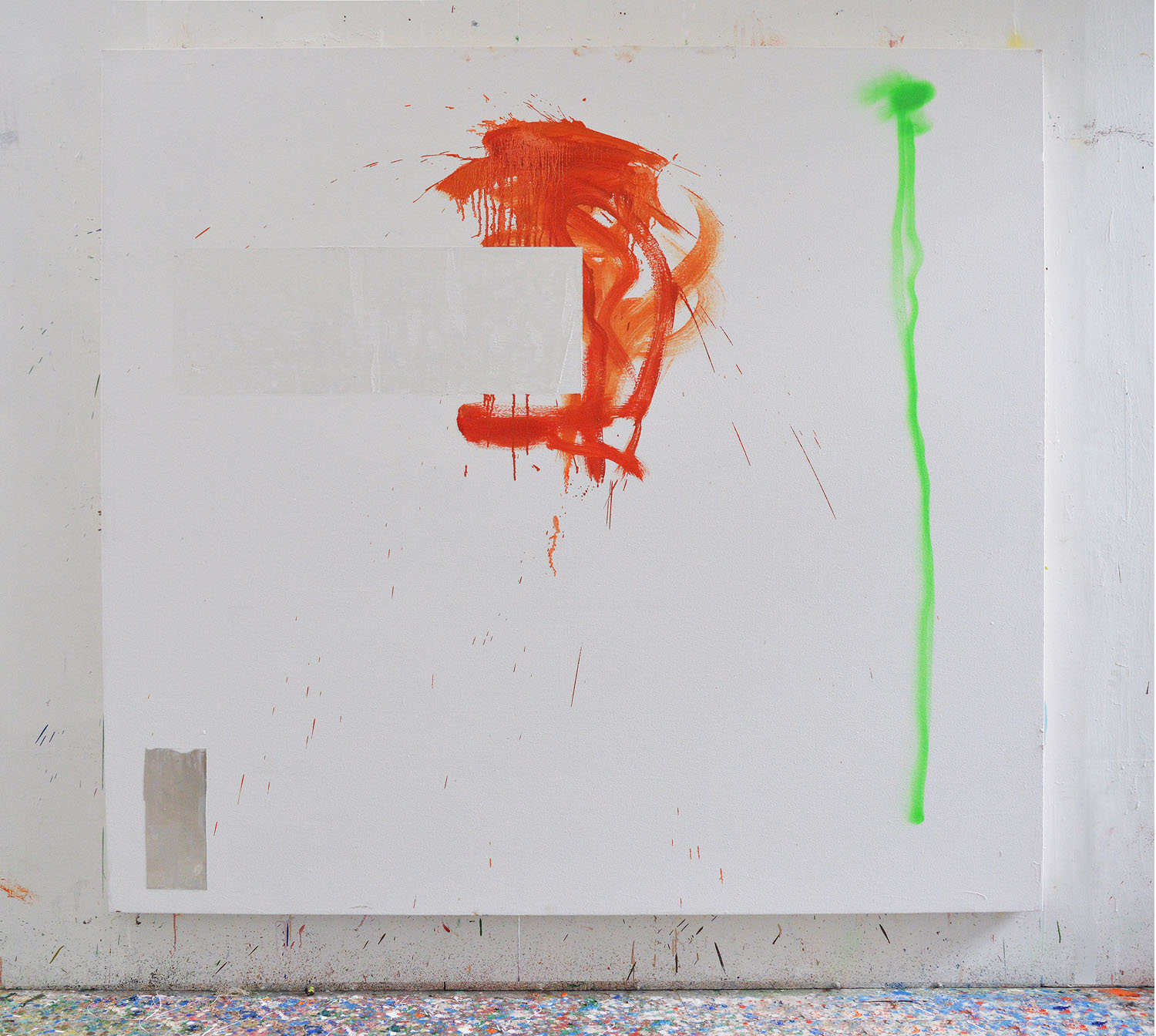Jens Pettersen is a painter born in Arendal, Norway. His work responds and engages with the semiotics of contemporary painting. Working primarily in the vernacular of painterly abstraction his work reflects on painting’s function asa stand-in or body double – and how gestural marks generate an inaccessible language which incite an analysis of painting’s play with hidden bonuses, idiosyncrasy of articulation and unresolved, yet unrelenting production and inquiry.
Painter Merlin Carpenter in conversation with Isabelle Graw, the Frankfurt based art theorist and critic, proclaimed quite accurately that the painting is a ‘readymade’ object — a commercial, mass-producible, ordinarily recognizable object that through context and intention is described as art. Carpenter argues that the recognizability of the object that is canvas stretched over a wooden bars is at this point a clear cliché — a commodity based on its form in history, its economic value and signifier of status. The same can be said for painterly gestures or tools, he also states ‘A drip is a readymade’. A current drip is a form of trick or signifier — referencing action painting of the late 40’s, 50’s and 60’s, where energy, bravery and risk is translated from the painter to the canvas inhabited by a post war ethos of progressive advancement , now, in the current moment, a reference to these strategies fall under scrutiny because of their conservativeness, lack of problematization and general acceptance and historical privilege. Painting finds itself now in what art theorist Rosalind Krauss described as a Post Medium Condition in her essay A Voyage on the North Sea. She argues that the medium specificity of modernism has become obsolete to describe the art of today and that instead of searching for purity of medium, we must rather investigate the purity of the general art itself.
Painting, in its simplest way, still holds its value in its activation of the body, akin to dance or song. Your senses are activated as you move your arms, jump around the studio to articulate a mark, inhale the smell of walnut oil, paint thinner, and varnish. Holding a tube of oil paint in your hand is as writer Susan Sontag would describe it — an erotics of art. The heavy, strangely cold tube sits in your hand, then you perversely squeeze its contents out, dragging the paint with your brush, pallet knife or hands across the canvas. There is in this relationship a closeness between you and the object .Smell, touch and physical sensation is critical to engage with the artwork as something other than merely an object intended for display. This engagement of smell and touch, alongside painting’s historical steadfastness turns the painting into the status of a quasi-person, an avatar thinking and acting on its own terms. Smell, texture and touch – body odor almost, creates an assertiveness of the otherwise ‘dead’ objecthood or commodity of an artwork. The relationship between investigative criticality and analysis of objects can in this way be flipped. A painting can in this configuration of quasi personhood be the one who is critical, the one who is judging, the one who knows more than you do.
